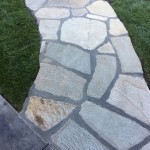How Often Do You Need to Seal a Concrete Patio?
Concrete patios offer a durable and aesthetically pleasing outdoor living space. However, to maintain their longevity and appearance, regular maintenance is essential. One crucial aspect of this maintenance is sealing. Determining the appropriate frequency for sealing a concrete patio is vital for preserving its structural integrity and visual appeal. Several factors influence this frequency, and understanding these factors will enable homeowners to make informed decisions about their patio maintenance schedule.
Sealing concrete creates a protective barrier against various environmental stressors and potential damage. This barrier helps to prevent water penetration, which can lead to cracks, spalling (flaking), and freeze-thaw damage in colder climates. Sealants also protect against stains from spills, dirt, and other contaminants. Furthermore, sealing can enhance the aesthetic appearance of the concrete by providing a glossy or matte finish, depending on the type of sealant used.
The ideal frequency for sealing a concrete patio is not a one-size-fits-all answer. It depends on several key factors, including the climate, the type of sealant used, the level of patio usage, and the properties of the concrete itself. By carefully considering these variables, homeowners can establish a suitable sealing schedule that optimizes the lifespan and appearance of their concrete patio.
Climate and Environmental Exposure
The climate in which the concrete patio is located significantly impacts the frequency with which it needs to be sealed. Patios in regions with harsh winters, characterized by frequent freeze-thaw cycles, require more frequent sealing than those in milder climates. The expansion and contraction of water as it freezes and thaws within the concrete can cause significant damage over time. A sealant helps to prevent water from penetrating the concrete in the first place, mitigating this risk.
Similarly, patios in areas with high levels of rainfall or humidity are also more susceptible to water damage and may benefit from more frequent sealing. Excessive moisture can lead to the growth of mold and mildew, which not only detract from the patio's appearance but can also compromise the concrete's structural integrity. Sealants provide a barrier against moisture, inhibiting the growth of these organisms.
Exposure to intense sunlight and UV radiation can also degrade sealants over time. In regions with long summers and high UV index, sealants may break down more quickly, necessitating more frequent reapplication. Therefore, carefully evaluating the climate and environmental conditions to which the patio is exposed is crucial for determining the appropriate sealing frequency.
Type of Sealant Used
The type of sealant selected also plays a crucial role in determining how often a concrete patio needs to be resealed. Different sealants offer varying levels of protection and durability. Sealants broadly fall into two categories: penetrating sealers and film-forming sealers.
Penetrating sealers, such as silanes and siloxanes, are designed to penetrate the surface of the concrete and react chemically to create a water-repellent barrier. These sealers typically last longer than film-forming sealers, often requiring reapplication every three to five years. However, they do not provide a glossy finish or protect against staining as effectively as film-forming sealers.
Film-forming sealers, such as acrylics and epoxies, create a protective layer on the surface of the concrete. These sealers offer better protection against staining and can enhance the appearance of the concrete with a glossy or matte finish. However, they tend to wear down more quickly than penetrating sealers and may need to be reapplied every one to three years, depending on the level of traffic and exposure to the elements. The specific product's specifications will provide the most accurate guidance regarding reapplication intervals.
The chosen sealant should be appropriate for the intended use of the patio and the specific environmental conditions. If the patio is subject to heavy traffic or frequent spills, a more durable sealant may be necessary, even if it requires more frequent reapplication. Consideration should also be given to the ease of application and the cost of the sealant when making a selection.
Patio Usage and Maintenance Practices
The amount of foot traffic and the types of activities that take place on the concrete patio also influences the frequency of sealing. Patios that are used frequently for entertaining, grilling, or other activities that may result in spills or stains will likely require more frequent sealing than those that are used less often. Heavy foot traffic can wear down the sealant more quickly, reducing its effectiveness and requiring more frequent reapplication.
Regular maintenance practices also play a critical role in extending the life of the sealant and reducing the need for frequent resealing. Cleaning the patio regularly to remove dirt, debris, and spills can help to prevent staining and maintain the sealant's effectiveness. Using mild detergents and gentle cleaning methods is important to avoid damaging the sealant. Pressure washing can be used, but it should be done with caution and at a low pressure setting to prevent damage to the concrete surface or the sealant.
Addressing any cracks or damage to the concrete promptly is also essential. Cracks can allow water to penetrate the concrete, leading to further damage and reducing the effectiveness of the sealant. Repairing cracks and then resealing the patio will help to prevent these problems and extend the lifespan of the concrete.
Furthermore, the use of protective mats or rugs in high-traffic areas can help to reduce wear and tear on the sealant. Consider placing mats near doorways or under furniture to protect the sealant from abrasion and spills. These simple measures can significantly extend the life of the sealant and reduce the need for frequent resealing.
Inspecting the patio regularly for signs of wear and tear is also recommended. Look for cracks, stains, or areas where the sealant is peeling or flaking. If these signs are present, it may be time to reseal the patio. Addressing these issues promptly will help to prevent further damage and maintain the patio's appearance and structural integrity.
In summary, determining the appropriate frequency for sealing a concrete patio requires careful consideration of several factors. Climate, sealant type, and usage patterns all play a significant role in determining how often the patio needs to be resealed. By carefully evaluating these factors and implementing proper maintenance practices, homeowners can ensure that their concrete patios remain durable, attractive, and functional for years to come.
Understanding the interaction between these factors allows for a more tailored approach to patio maintenance. For instance, a patio in a sunny climate using a film-forming sealant and experiencing high traffic might benefit from annual sealing. Conversely, a patio in a moderate climate using a penetrating sealant and experiencing low traffic might only require sealing every five years. Observation of the patio's condition and adherence to the sealant manufacturer's recommendations are crucial components of an effective maintenance strategy.
By diligently assessing these variables, homeowners can optimize the performance of their concrete patio sealant, ensuring long-lasting protection and beauty for their outdoor living space. This proactive approach not only preserves the patio's aesthetic appeal but also safeguards its structural integrity, preventing costly repairs and contributing to the overall value of the property.

How Often Should You Reseal Your Concrete Increte Of Houston

Why You Should Seal Your Concrete Driveway Or Patio Gleam Team

7 Steps To Sealing Concrete Like A Pro Expert How Guide Network

Importance Of Concrete Sealing In Louisiana

Sealing Your Patio Pros And Cons

How To Seal Concrete For A Uniform Appearance Decor

How Often Should You Clean Seal Pavers

How Long Does It Take For Driveway Sealant To Dry

How Much Does Sealer Cost

Concrete Patio Sealer Gatorguard
Related Posts








